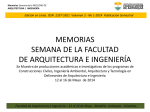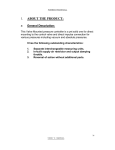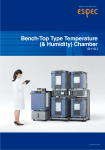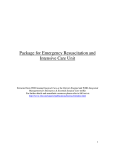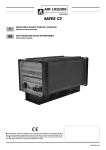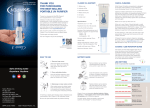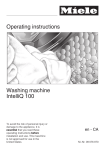Download SkyHydrant Instructions
Transcript
SkyJuice Foundation Inc. No: 9883786 Level 15, 3 Spring Street, T | +61 2 9252 4420 ABN 57 240 520 309 Sydney NSW 2000 Australia M | +61 400 062 265 F | +61 2 9252 4430 E | [email protected] W | www.skyjuice.org.au SKYHYDRANT™ OPERATING INSTRUCTIONS The SkyHydrant™ ultrafiltration unit provides clean safe drinking water without the need for power or replacement membranes. All operations are simple and easy to undertake and the unit can be set up freestanding or wall mounted. SETTING UP THE SKYHYDRANT™ UNIT Select a secure undercover location to install the ultrafiltration unit sheltered from the sun and in a well-drained area with access for the discharge of backwash water. The ultrafiltration unit requires daily care for its continued operation and a maintenance person should be in charge to oversee daily servicing of the unit. Daily log sheets should also be completed recording water production and scheduled servicing of the unit. ASSEMBLING THE SKYHYDRANT™ UNIT Connect the cleaning handles to the top of the ultrafiltration unit. First unwind the head shaft 2 turns anticlockwise and remove the two temporary bolts after which the handles can be screwed into position. The ultrafiltration unit can be bolted to a wall using the connecting brackets supplied or can be set up as a freestanding unit using the legs supplied. All outlets use 20mm (3/4”) connectors and fittings. Position taps in the desired location for use. Note: taps T1 and T2 can be folded down level for use. Connect hoses and fittings to allow the ultrafiltration unit to function i.e. Taps, pipes, tanks, pumps or other equipment. Connect “dirty water in” hose to (T1) Connect “backwash out” hose to (T2). Connect drinking water “clean water out” hose to (T3). INTERNAL FILTER MODULE The filter module is permanently located inside the ultrafiltration unit and does not need to be accessed or replaced providing it is maintained properly. Raw water entering the unit should not contain damaging chemicals and should be pre-filtered to remove any solids. Regular cleaning of the ultrafiltration unit is essential for maintaining a continuous flow of drinking water. OPERATING THE SKYHYDRANT™ UNIT To ensure the correct flow of water is maintained, turn all taps off before commencing each operating procedure: Fill the Ultrafiltration Unit with Water: Open T1 (dirty water in) and T4 (vent). This fills the ultrafiltration unit with raw water. When water flows out close T4 (vent). Briefly open tap T6 (air purge) to clear the lines of any trapped air. Produce Drinking Water: Open T1 (dirty water in) and T3 (clean water out) to commence the flow of drinking water. MANUAL CLEANING (DAILY) Undertake manual cleaning at least once a day or more often if the flow of drinking water slows. Manual cleaning is carried out while the ultrafiltration unit is full of water. Don’t forget to turn all taps off before commencing. 1) Rotate the cleaning handles three turns anticlockwise to release the O-ring seal. 2) Move the cleaning handles back and forth vigorously for 1 minute. This agitates and cleans the filter module located inside the ultrafiltration unit. Some leakage may occur around the rotating shaft while cleaning is undertaken – this is not a problem. 3) Open T4 (vent) & T2 (backwash out) to allow the backwash water to drain away and continue moving the cleaning handles until the backwash is complete. 4) If necessary, repeat the manual cleaning procedure until the wastewater from T2 (backwash out) is the same colour as the dirty (raw) water passing into the unit through T1 (dirty water in). 5) Rotate the cleaning handles three turns clockwise to reseal the o rings – don’t over tighten. 6) The “Manual Cleaning Procedure” is now complete and the unit can again be refilled with water. OPERATING THE SKYHYDRANT™ UNIT (Continued) CHEMICAL CLEANING USING CHLORINE (MONTHLY) Undertake chemical cleaning monthly or more often if the flow of drinking water slows. Chlorine is used in this process to dissolve accumulations not removed by the “Manual Clean”. Use either chlorine powder granules e.g. calcium hypochlorite (bleaching powder) or liquid chlorine e.g. sodium hypochlorite to make a solution of 0.1% (1,000 parts per million) for adding the filter unit. Caution: When handling chlorine follow the manufacturer’s instructions - keep safe by wearing protective gloves, eyeglasses and clothing and avoid inhaling the chlorine. To undertake a Chemical Cleaning complete the following procedure: CHEMICAL CLEANING USING CITRIC ACID If Iron or Manganese is present in the source water undertake periodic chemical cleaning using 500 grams of Citric Acid. Follow the same procedure as if using chlorine (above) but use citric acid instead. Citric acid cleaning is undertaken in addition to the monthly chemical cleaning program using chlorine. 1) Complete a “Manual Clean Procedure” but leave the unit empty (do not refill). 2) Fill the Chlorine Tank ¾ with water. 3) Add chlorine to the chlorine tank using the teaspoon amounts listed below and stir with a stick until dissolved: Add 2 Teaspoons of chlorine powder with 65% available chlorine (700g / kg). OR Add 3 Teaspoons of chlorine powder with 55% available chlorine (550g / kg). OR Add 4 Teaspoons of chlorine powder with 35% available chlorine (350g / kg). OR Add 6 Teaspoons of chlorine powder with 25% available chlorine (250g / kg). OR Add 100 Millilitres of liquid chlorine (Sodium Hypochlorite) with 12% available chlorine. 4) Open T5 (chlorine) to allow the chlorine tank to drain, than close T5. 5) Fill the ultrafiltration unit with water by opening T1 & T4 until water flows out of T4 than close both taps. 6) Move the cleaning handles back and forth a few times to mix the chlorine inside the unit than leave to soak for at least 2 hours. 7) After soaking, undertake a “Manual Clean” to remove the chlorine solution. 8) The “Chemical Cleaning” is now complete. The unit can again be refilled with water. HOW THE SKYHYDRANT™ UNIT WORKS The ultrafiltration unit requires no power to operate instead it relies on gravity water pressure. Raw water flows through the unit with a water head pressure of between 2 metres and maximum 4 metres (20 kpa to 40 kpa or 3 psi to 6 psi) to produce a typical flow rate of 500 to 700 litres of drinking water per hour (subject to the quality of source raw water). Various options can be used for setting up the ultrafiltration unit water plants. A popular method is to pump raw water (using mechanical or hand pump) to a 1,000 litre header tank on a 3 meter high tank-stand and allow the water to gravity feed down through the ultrafiltration unit into a lower 1,000 litre drinking water tank located on a 1 meter high tank stand. The drinking water tank can be connected with taps or be connected with pipes for supplying drinking water directly to houses or to a distribution network. Never pump or connect mains water pressure directly to the ultrafiltration unit without using a suitable water pressure regulating or control device as excessive water pressure may damage the filter fibres. SITE REQUIREMENTS For the ultrafiltration unit to function it requires additional operating equipment. This may include hoses, pipes, pumps, taps, tap stands, float valves, water bladders, tanks and tank stands. The amount of additional equipment depends on the installation being undertaken and individual sites requirements. Installations where existing roof top water tanks are available allows the ultrafiltration unit to become an “in line filter” connected to the existing water supply system while other installations will require more extensive site work and equipment. It is important when setting up the ultrafiltration unit to ensure correct sizing of pipes, pumps and other equipment is undertaken. MAKING SURE THE FEED WATER IS SUITABLE FOR ULTRAFILTRATION Not all water is suitable for filtering through the Ultrafiltration Unit for the purpose of producing drinking water and testing for unsuitable contaminates should be undertaken before use. Removes Diseases Yes: The ultrafiltration unit will significantly remove biological contaminates and pathogens including bacteria, viruses, protozoa, cysts, parasites etc. making water safe to drink. Removes Turbidity - Yes: The ultrafiltration unit will remove turbidity and dirt from water. Dirty water can however damage the filter fibres and a pre-filter is recommended to be installed. Does Not Remove Chemicals: The ultrafiltration unit will not remove salt or dissolved chemicals and minerals from water. KEEPING WATER PIPES & CONTAINERS SAFE It is good practice to soak and flush drinking containers, hoses, taps, and other equipment with a 0.1% (1,000 parts per million) chlorine solution to eliminate any residual or accidental contamination. Add approximately 1 teaspoon of chlorine powder to 5 litres of water and use this to flush through pipes or wash drinking water containers. PRE-FILTRATION TREATEMENT It is highly recommended that a pre-filter be installed to reduce solids from fouling the internal filter module. A 500-micron pre-filter is suitable however a 200 micron (80 mesh) pre-filter will provide better protection. Pre-filters also require regular cleaning to maintain a good water flow. MULTIPLE UNIT CONNECTIONS Multiple ultrafiltration units can be coupled together on site creating large-scale water production plants. Configurations of 2 to 40 or more Ultrafiltration Units can be manifolded together to meet the water supply demands of the local community. Generally speaking each ultrafiltration unit can produce up to 10,000 litres per day however this will vary significantly subject to the quality of the local raw water source. Highly turbid and poor water sources will significantly reduce output as well as requiring increased frequency of cleaning cycles. Multiple connection kits are available in kits or units can be manifolded together on site using locally available plumbing supplies. KEEPING DRINKING TANKS SAFE Water produced from the ultrafiltration unit filtration unit is free of biological organisms and safe to drink however, prolonged storage of this water in tanks may cause deterioration in quality. In hot climates, tank water may stay safe for a few days whereas in colder climates it may stay safe for weeks. To maintain water quality it is good practice to disinfect drinking water tanks and water pipes with a small amount of chlorine to prevent the growth of unwanted organisms and pathogens in the stored water. Add sufficient chlorine into drinking water tanks to maintain a residual free chlorine level of between 0.2 to 0.5 milligrams per litre (mg/l). Use a water testing kit every few days to monitor the chlorine levels and make adjustments to the chlorine levels as necessary. SKYHYDRANT UNIT SETUP Ultrafiltration unit can be set up to operate as single stand alone units (pictured above) or manifolded together into multiple units for high flow production (pictured). Raw water to ultrafiltration unit can be supplied by gravity feed overhead tanks or by pumps and mains pressure using pressurereducing devices. Operating pressure should be limited to (20 kpa to 40 kpa or 3 psi to 6 psi) or about 2 to 4 meters head pressure to produce a typical flow rate of about 500 to 700 litres per hour per unit. Drinking water produced from the ultrafiltration unit can be stored in tanks and connected to taps or be piped to household supplies and commercial water distribution networks. As a guide for every 1,000-litres of tank water, add about 3/4 teaspoon of chlorine powder (at 65% available chlorine) or 1 1/2 teaspoons of chlorine powder (at 35% available chlorine). First, mix the chlorine in a small bucket of water to make a solution before adding to the water tank. OPERATION LOG SHEET It is good practice to keep a daily operational log-sheet recording drinking water production flow rates and when cleaning procedures were undertaken. This is useful to identify a pattern of use when monitoring on-going performance trends or to determine if operational problems may be occurring. It is also useful as a convenient reminder of when the next cleaning cycle is due to be undertaken, particularly when a cleaning roster is being used. FITTINGS AND ACCESSORIES KIT The following items are included as part of the ultrafiltration accessory and set up kit: Feet Mounting Brackets. If setting the filter up as a free standing unit use the feet brackets. These are crossed as shown and bolted to the base of the filter unit. These can be used in addition to the wall mounting brackets if needed. Handles. Screw the handles onto the head assembly on top of filtration unit. The handles are supplied separately to avoid breakage during shipping. T6 Valve. Fit the T6 Valve to the top of the filtration unit using thread tape. First unscrew the plug in head assembly before screwing in the T6 Valve. The valve is supplied separately to avoid breakage during shipping. Hose Clamps. Use for securing hoses onto fittings. Screw Driver. Use for tightening hose clamps in position. Spoon. Use to measure out chlorine for disinfectant canister. Stirrer Stick. Use to mix chlorine in disinfectant canister. “O” Rings. Replacement spare “O” rings. Plumbing Fittings. Spare plumbing fittings and plumbers tape are included to allow for connecting the unit flexible hose or PVC glue pipe Knife – for cutting hoses. Wall Mounting Brackets: If fixing the filter unit to a wall use the wall brackets as shown. The brackets can be used in addition to the feet brackets if needed. OPERATION LOG TIME DATE DRINKING WATER PRODUCTION (LITRES) MANUAL CLEANING UNDERTAKEN CHEMICAL CLEANING UNDERTAKEN AMOUNT CHLORINE USED OTHER INFORMATION OR NOTES








